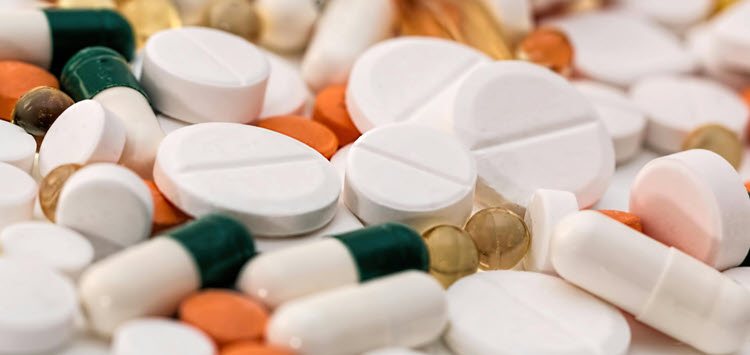MDM: Treatment Risk – Monitoring for Toxicity

Image Credit: Pixabay
You may be wondering what the differences are between prescription drug management and monitoring for toxicity. There are several factors, but generally, I would say it boils down to two things. The scope of monitoring and the of risk of toxicity due to a narrow therapeutic window.
Let’s explore the scope first.
Prescription Drug Management:
Prescription drug management involves oversight and regulation of medications prescribed to a patient.
This includes:
• Evaluating the necessity of a certain medication.
• Prescribing new medications or adjusting existing ones.
• Documenting the medication and dosage.
• Monitoring the patient’s response to the medication to ensure effectiveness and safety.
Drug Management with Monitoring for Toxicity:
Drug management that includes monitoring for toxicity is more intensive and involves:
• Monitoring drug levels in the patient’s system to prevent toxic effects.
• Frequent assessments such as blood tests, ECGs, and vital signs monitoring.
• Adjusting dosages based on these assessments to maintain therapeutic levels without causing harm.
• Managing high-risk medications that have a narrow therapeutic window and can easily become toxic.
Key Differences:
• Scope of Monitoring: Prescription drug management focuses on general oversight and effectiveness, while toxicity monitoring involves detailed and frequent checks to prevent harmful side effects.• Risk Level: Toxicity monitoring is typically required for high-risk medications that can cause significant harm if not carefully managed.
Now let’s discuss efficacy vs. toxicity monitoring.
Prescription Drug Management:
Monitoring for efficacy in a large therapeutic window involves ensuring that the drug dosage is sufficient to achieve the desired therapeutic effect without causing adverse effects. Drugs with a large therapeutic window, such as amoxicillin, have a wide range between the minimum effective dose and the maximum safe dose, allowing for more flexibility in dosing and less frequent monitoring.
Examples:
- Antibiotics: Drugs like vancomycin are monitored to ensure they are effective against infections. While toxicity can occur at high levels, the primary focus is often on maintaining therapeutic levels to ensure efficacy.
- Antiepileptics: Medications such as levetiracetam and lamotrigine are monitored to ensure they are effective in controlling seizures. These drugs generally have a wide therapeutic range, making toxicity less of a concern compared to efficacy.
- Antidepressants: Drugs like selective serotonin reuptake inhibitors (SSRIs) are monitored for their therapeutic effects in treating depression and anxiety. Toxicity is less of a concern within the therapeutic range.
- Antihypertensives: Medications such as ACE inhibitors and beta-blockers are monitored to ensure they effectively manage blood pressure. These drugs are typically safe within their therapeutic range.
Monitoring for Toxicity:
Monitoring for toxicity in a narrow therapeutic window requires precise dosing and regular monitoring to avoid toxicity. Drugs with a narrow therapeutic window, such as warfarin, have a small range between the effective dose and the toxic dose. This means that even slight deviations in dosage can lead to serious adverse effects, necessitating frequent blood tests and close clinical supervision.
Example:
- Warfarin – An anticoagulant used to prevent blood clots. Monitoring is crucial to maintain the therapeutic range and avoid bleeding complications.
- Digoxin – Used for heart conditions like atrial fibrillation and heart failure. It has a narrow therapeutic range and requires monitoring to avoid toxicity, which can cause symptoms like nausea, vomiting, and arrhythmias.
- Vancomycin – An antibiotic used to treat serious infections. Monitoring is necessary to ensure therapeutic levels and prevent nephrotoxicity and ototoxicity.
In summary, documentation should demonstrate the work involved in monitoring for toxicity during the encounter and what the potential risks for toxicity are. According to the AMA (American Medical Association), monitoring by history or exam does not qualify. Monitoring should follow standard practices but can be tailored to individual patients. Intensive monitoring can be either long-term or short-term. Long-term monitoring happens at least every three months. It can involve lab tests, physical tests, or imaging. Good documentation can mean the difference between getting credit for prescription drug management and monitoring for toxicity.
Sample Documentation:
We are actively monitoring for signs of warfarin toxicity, including regular assessments of INR levels, liver function tests, and patient-reported symptoms such as unusual bruising or bleeding, to ensure safe and effective anticoagulation therapy.
Resources:
AMA CPT® E/M code and guideline changes for 2023
Novitas: E/M Frequently Asked Questions
AI Copilot